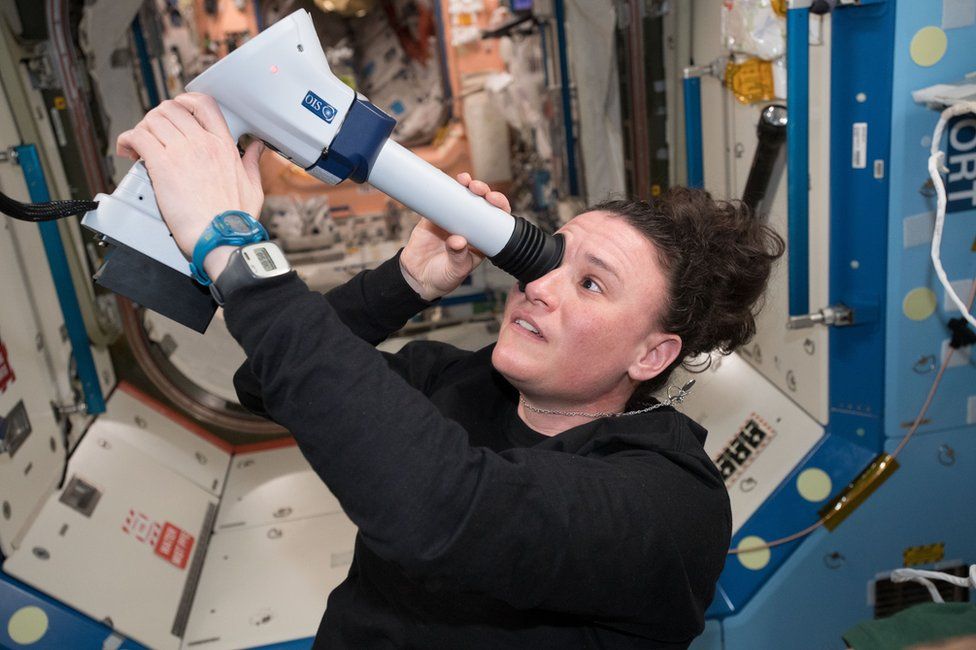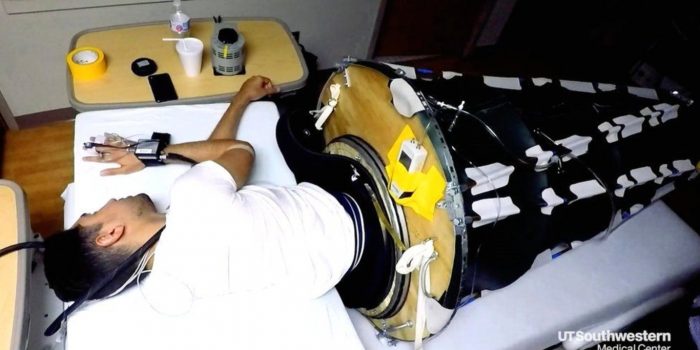There is a vision problem that astronauts develop by staying in space for too long. It is called spaceflight-associated neuro-ocular syndrome (SANS). An experimental vacuum sleeping bag is being used to avert this situation.
In the zero-gravity environment of space, fluids gather in astronauts’ heads when they lie down. On standing up, it doesn’t fully leave the head. This liquid exerts pressure on the backs of the eyes. This leads to a condition that can cause flattening of the eyeballs and swelling of the optic nerves with time. This often results in visual impairments such as nearsightedness.
If the astronauts come back to earth for some time, the problem reverses. However, when in space, they have trouble performing certain vision-dependent tasks. SANS is also thought to affect brain and heart functions.

Therefore, this vacuum sleeping bag seems to be the solution. It is developed by Dr. Benjamin Levine and colleagues at the University of Texas Southwest Medical Center. It has an airtight sleeping bag with a rigid frame and a gasket at the top which seals around the user’s waist. Once the person’s lower body is inside the apparatus, the air is pumped out of the sealed bag, creating a vacuum. The concept is to draw fluids away from the user’s head and send them to the lower body with the help of a vacuum. This will lessen the strain on the eyes.
10 volunteers spent six days in a supine (lying on the back) position. The fluids were collected in their heads as they did not stand up.

First three days, the volunteers simply lay on a bed all day and night. In the rest of the three days, they spent eight hours each night in the sleeping bag. When their eyes were subsequently examined via optical coherence tomography, it was found that a part of the eye known as the choroid was considerably less swollen over the period that the sleeping bag was used. This swelling leads to SANS.
“This is perhaps one of the most mission-critical medical issues that have been discovered in the last decade for the space program,” says Levine. “I’m thankful for the volunteers who are helping us understand, and hopefully, fix the problem.”
A paper on the research was recently published in the journal JAMA Ophthalmology.


